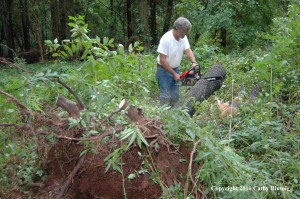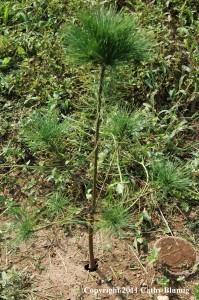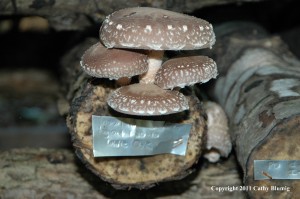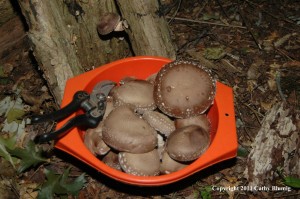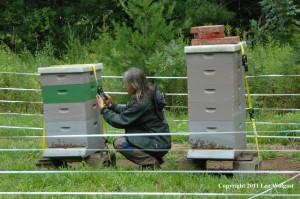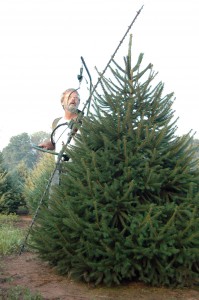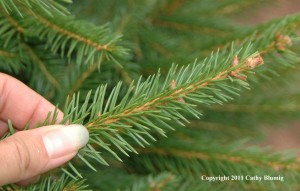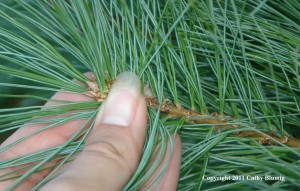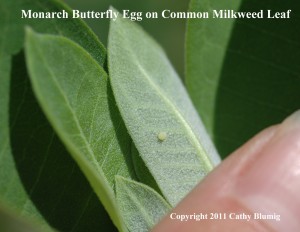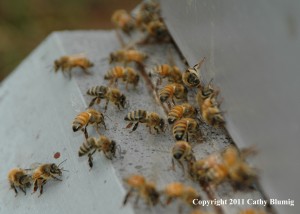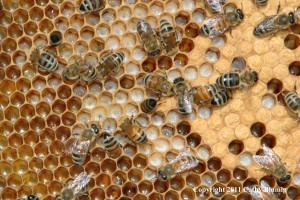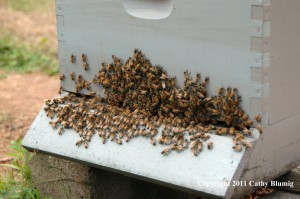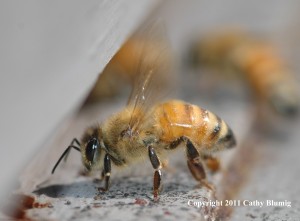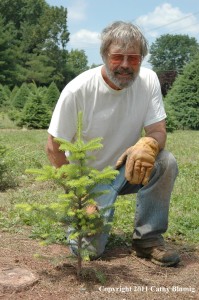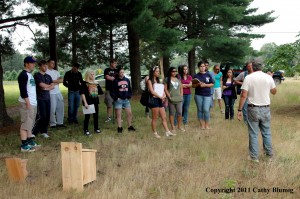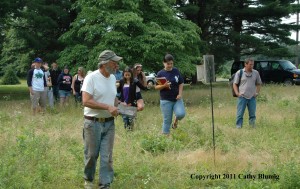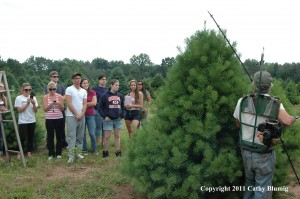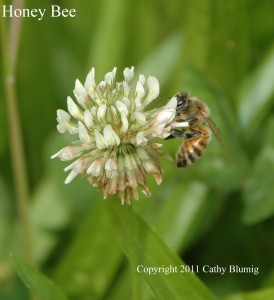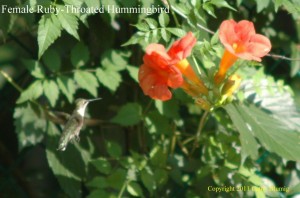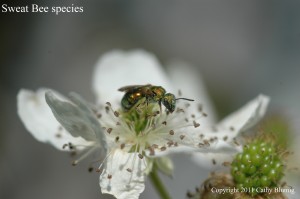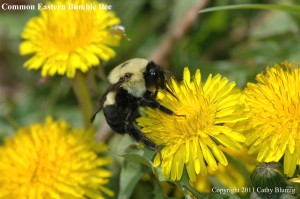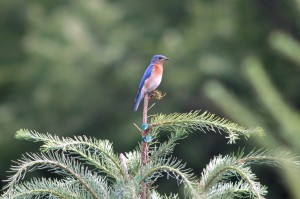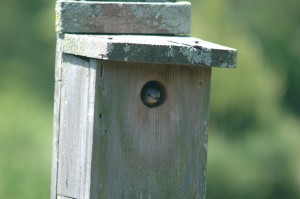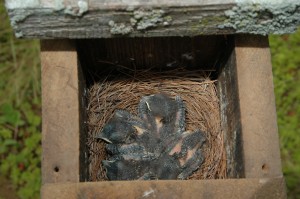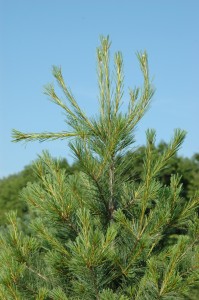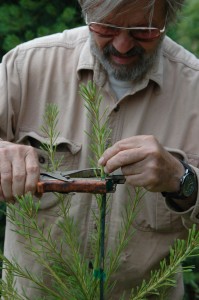It’s been over a week since Hurricane Irene hit New Jersey and although many areas are still dealing with serious problems caused by the storm, and now even more rain, Wolgast Tree Farm was very fortunate to come through virtually unscathed.
Our bee hives stayed upright and “the girls” (worker honeybees are all female) were out and about looking for pollen and nectar by 10:30 am Sunday the day after the storm.
To our amazement, none of the trees that line our driveway blew over.
Some of our maple trees that we’ve tapped in the past to make maple syrup lost many branches, and one had the top broken off completely, so syrup production will likely be lower in 2012.
One cherry tree by our house had blown over, but missed power lines and other structures so it wasn’t a big deal. We cut it up for firewood.
So far, the only storm-related problem with our Christmas trees involves the seedlings we planted this past spring. The heavy rains saturated the soil and that combined with the severe winds to whip the seedlings around which created “donut holes” around the base. These openings are a problem because the roots are more likely to lose moisture when its dry, and during the colder months the roots can be exposed to freezing. Both can stress the seedlings and hamper growth. We’ll need to walk the rows and check each seedling for any gaps and close the ones we find.
One tiny positive that came from Irene was that the rain she brought caused many of the logs we inoculated last year with shiitake mushroom spawn to fruit. Sautéed in butter and garlic, or prepared a zillion other ways, shiitake mushrooms
are a tasty treat. Having produced them ourselves brings a sense of satisfaction, and puts a little twist on the adage of making lemonade when life hands you lemons.
Wolgast Tree Farm feels very lucky to have made it through Hurricane Irene with so little damage, and we keep in our thoughts the many others who had, and in many cases continue to have, great difficulties as a result of the storm. We hope everyone is safe and that life gets back to normal as soon as possible.

